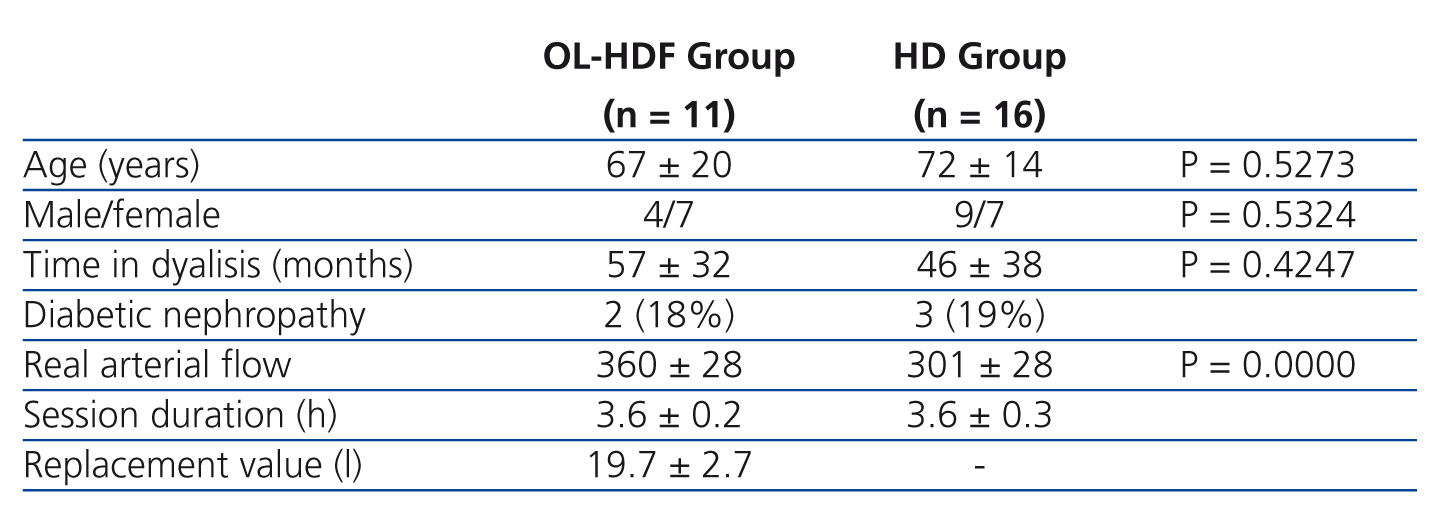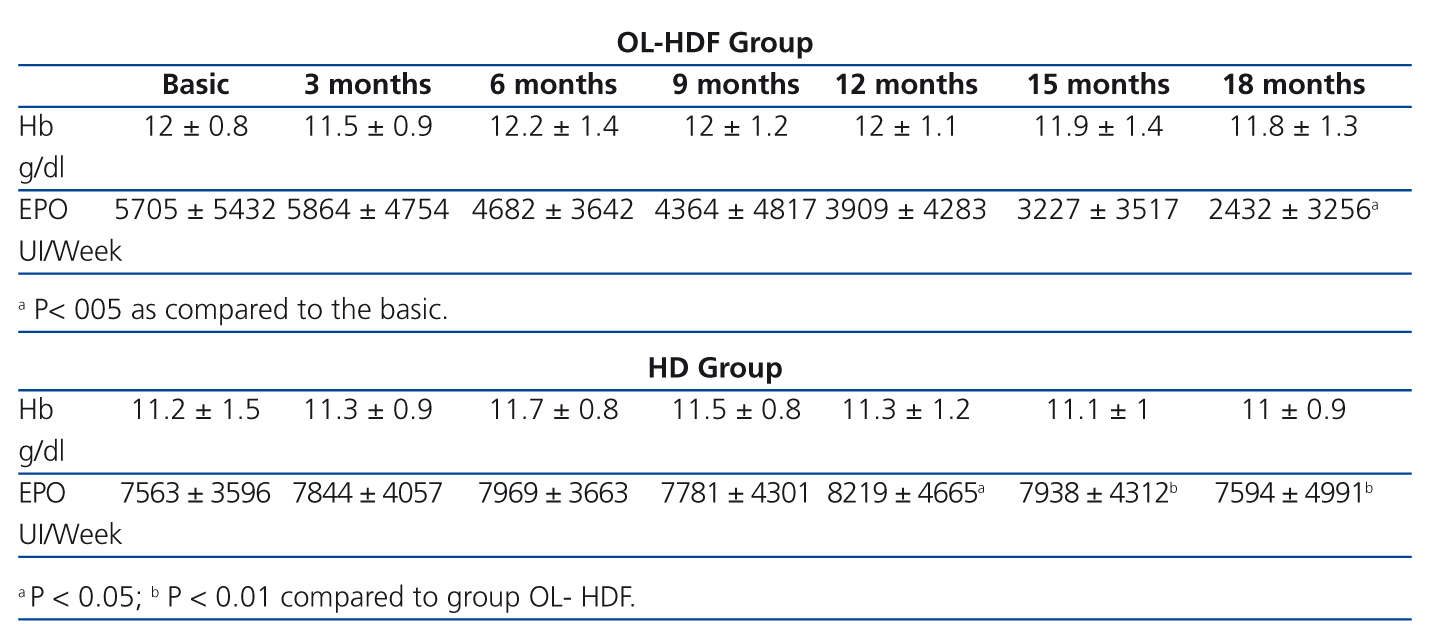To the Editor:
The influence of convective techniques on the evolution of the dialysed patient’s anaemia is controversial when compared with haemodialysis performed with high flux membrane and ultrapure bath. In many studies short-term benefits could not be found.1 It is possible that the effect of convective technique on anaemia may require a longer development time. To analyse this hypothesis, we have studied the anaemia evolution in the patients of our unit that have received uninterrupted treatment with posilutional on-line haemodiafiltration (OL-HDF) for at least 18 months.
OL-HDF was implanted in our Chronic Haemodyalisis Unit on July 2009. Between the initial date and March 2012 (date of study closure) a total of 128 patients with chronic kidney disease were treated. Among them, 36 (28%) received OL-HDF and the other 92 were treated exclusively with high-flux haemodialysis technique. we used biocompatible high-flux membranes (ultrafiltration rate >59ml/h/mmHg) and ultrapure dialysis bath on all patients.
Of the 36 patients receiving OL-HDF at some point in the period under review, we selected those who were treated with the convective technique for a minimum of 18 months. 11 patients have been recorded (OL-HDF group). As control group we have considered the 16 patients that at the time of study closure (31 March 2012) had been treated with hemodialysis for the previous 18 months (HD group).
Table 1 shows the data of both groups. Compared with the HD, the OL-HDF group is younger, has a lower proportion of males and more time on dialysis, although the differences did not reach statistical significance in any of these parameters.
Table 2 shows the evolution of the concentration of haemoglobin and the weekly dose of erythropoietin. The haemoglobin concentration remained stable in both groups during the study. Although the HD group started with a lower haemoglobin concentration, there was no statistically significant difference between the two groups at any time during the evolution. In the OL-HDF group, the weekly dose of erythropoietin began to decline after the sixth month of treatment, but the decrease only reached statistical significance at 18 months, when 5 of the 11 patients did not require erythropoietin. In the HD group, erythropoietin dose underwent no significant changes, and could not be removed from any of the patients. When comparing both groups, the difference in the dose of erythropoietin began to be statistically significant after 12 months of treatment with OL-HDF.
The effect of convection on anaemia in our patients was not detected until the sixth month of treatment, when we began to observe a decrease in the need for erythropoietin. When compared to the group of patients treated with hemodialysis, the difference in erythropoietin dose began to reach statistical significance from month 12. These results are similar to those observed in the long term by Peña et al.2 With shorter periods of evolution it is feasible that the relevant effects on anaemia are impossible to observe.
Conflict of interest
The authors declare that there is no conflict of interest associated with this manuscript.
Table 1. Patient Data
Table 2. Anaemia Evolution









